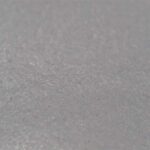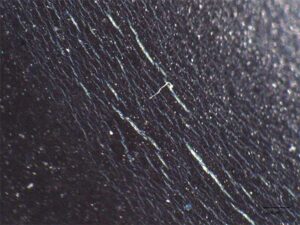

High-quality coatings are necessary to protect metals and keep buildings looking fresh for decades, but what role do coatings play during the installation, or in cases of extreme weather? Harsh handling or the impact from hail, for example, can damage the surface. This can detract from the building aesthetic or cause the protective coating of the metal to fail.
The best coating needs to not only protect against ultraviolet (UV) light, acid rain, humidity, and corrosive environments like salt mist, but also withstand other extremes such as hail, temperature fluctuations, mildew growth, and more encountered during its lifetime. Polyvinyl fluoride (PVF) film provides such protection to metal, and it has more than 50 years of proven performance in a variety of demanding applications in extreme environments.
Installation issues
Metal panels can be easily damaged when a roof is installed. Scuffing and scratching of the metal coating can occur when tools are dropped or when panels are dragged or roughly stacked, or even by roofers’ careless walking. This damage often worsens as a roof becomes hotter. If a scratch or scuff is deep enough to reach the metal, it could lead to severe corrosion and reduce the longevity of the metal or result in costly repairs.
Metal coatings with good bendability, abrasion, and impact resistance can help to minimize any installation damage. PVF film offers the best possible resistance against scuffing and marring, and it has been praised by installers for outstanding appearance and robustness during installation—even on the hottest days. These observations were confirmed in the laboratory; standard abrasion testing showed a PVF coating is more resistant to abrasion and retained its gloss better than a polyvinylidene fluoride (PVDF) coating (Figure 1).

Crushing conditions
After metal panels are installed on the jobsite, they are regularly exposed to harsh UV radiation, high heat, and humidity. These conditions can embrittle coatings and make them more susceptible to environmental damage. Since PVF film is flexible—even without the addition of plasticizers or acrylic resin—it remains pliable for years outdoors. This is important for surviving harsh weather conditions, including impacts from hailstorms, or flying debris from high winds.
Such impacts can cause visible or invisible crack damage to metal coatings, resulting in unsightly corrosion damage. Even after long-term aging in hot and humid conditions, PVF film retains its flexibility, and, therefore, does not crack when impacted with debris. In contrast, a coating with a typical blend of 70 percent PVDF and 30 percent acrylic undergoes a change in its crystalline phase after weathering that causes embrittlement and cracking in the coating after impact (Figure 2).
With decades of outdoor experience in the harshest environments, PVF film has stood the test of time. Superior flexibility and durability ensure stability from severe environmental stressors, from human stressors during installation, and during unpredictable weather during a building’s lifetime. Painted metal buildings provide some of the best possible longevity on the market, and the greatest protection against wind uplift, fire, and other challenges. Using PVF film will retain the aesthetic and increase the endurance performance of a metal structure.
Yiyuan (Ben) Yin, PhD, is a principal investigator at DuPont. Before arriving at DuPont, he worked at Chevron in R&D. He holds a PhD in chemical engineering from Rice University and is skilled in material and process development.
Michael Demko, PhD, is the R&D director at DuPont Tedlar. In his 11 years with DuPont, he has worked on a variety of polymer chemistries with an expertise in applications of specialty polymers in building and construction, aircraft, photovoltaics, and electronics. He has a doctorate in mechanical engineering from the University of California, Berkeley and an undergraduate degree from Case Western Reserve University.


